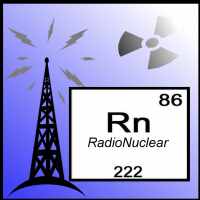Alloy 617 is new option for high-temp reactors
When it comes to advanced, high-temperature reactors—using working fluids such as molten salt, high-temperature gases, or sodium—there simply are not many qualified materials for nuclear component construction. Alloy 617 is not a new material, but it made the news after Idaho National Laboratory announced that it was recently added to the American Society of Mechanical Engineers (ASME) Boiler and Pressure Vessel (BPV) Code for high-temperature nuclear applications, bringing the total number of qualified high-temperature materials to six.



 Welcome to the New Year! Even though I am on the road, there is just so much happening lately in nuclear I could not pass up the opportunity to talk about it!
Welcome to the New Year! Even though I am on the road, there is just so much happening lately in nuclear I could not pass up the opportunity to talk about it!